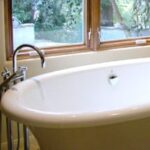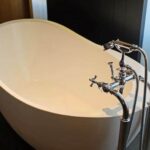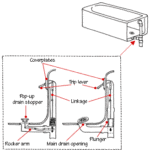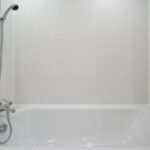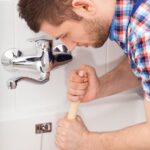An expert guide that shows how to clean a porcelain enamel bathtub using different types of cleaners, with insight about which is best for each project.
High-quality bathtubs—and a variety of other plumbing fixtures—have surfaces made of porcelain (or “vitreous”) enamel.
This enamel is the result of fusing powdered glass onto a base or metal, glass, or tile at a very high temperature—typically 750 to 850 degrees C. As the glass powder melts, it flows evenly across the surface, eventually cooling to form a very hard, smooth, durable finish that can be plain white or brilliantly colorful. This type of finish is used on products ranging from bathtubs and sinks to appliances and tile.
When cleaning a porcelain enamel surface, it’s important to keep in mind that the material is extremely hard, but still can be chipped by hard blows, or damaged by harsh abrasives and long-term use of acids. Small chips and dings can be repaired with an inexpensive porcelain touch-up solution, available online and at home-improvement centers (be sure to choose the color that is a perfect match).
Wash porcelain with a dilute mixture of warm water and detergent. A pasty solution of warm water with baking soda will help remove dirt and soap scum.
Commercial bathroom or surface cleaners also can be used. Chlorine or hydrogen peroxide bleach works well at removing tough stains. Always dilute them before using, and rinse them off after a few seconds of use. Bleaches won’t work on removing rust. Be sure to wear gloves.
You can remove heavy deposits of dirt, grease, or soap scum with a solution of 1 tablespoon of a TSP (trisodium phosphate) substitute mixed with 1 gallon of hot water. Do not combine this with other cleaners.
Most scouring powders have hard, sharp particles that make tiny scratches in the surface. These scratches will catch dirt, grease, hard water deposits, and soap residue. Then more abrasives are needed to remove these imbedded soils. Avoid using scouring powders, but if you must use an abrasive to remove a particularly stubborn stain, use the finest scouring powder you can find.
Acetic and muriatic acids can be used to remove some stains, but they can slowly disintegrate the surface coating of porcelain enamel, eventually attacking its metallic base. If you use an acid, be sure to wear rubber gloves.
After cleaning with any of these methods, always rinse the surface thoroughly with clean water.
NEXT SEE: Repairing Bathtub Surfaces



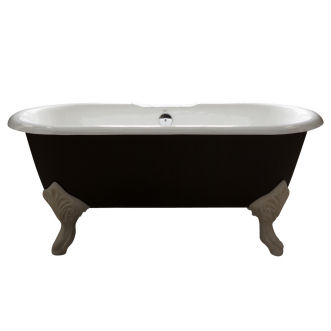
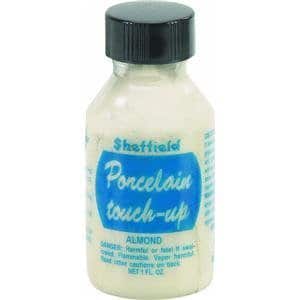
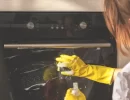

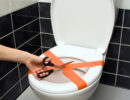

 Don Vandervort writes or edits every article at HomeTips. Don has:
Don Vandervort writes or edits every article at HomeTips. Don has:
